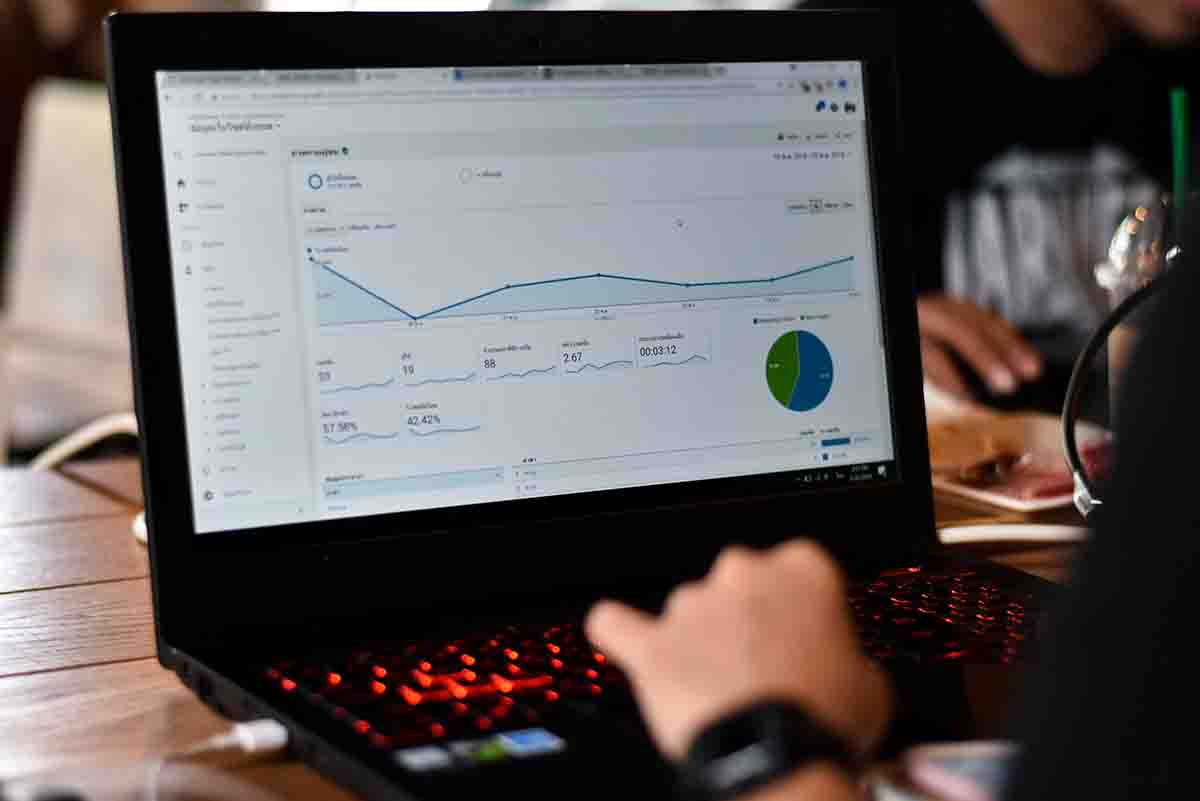Table of Contents
For more info about our Technology Blog please visit us here

How to Disavow Toxic Backlinks?
Navigating the murky waters of SEO can be daunting, especially when faced with toxic backlinks that threaten to sink your site’s search engine ranking. This article serves as your ultimate guide to understanding and disavowing these harmful links effectively. Learn how to audit your backlink profile, identify links that can damage your SEO, and use Google’s Disavow Tool to protect your website. With step-by-step instructions and expert tips, you’ll be equipped to cleanse your online presence and enhance your site’s integrity.

What are toxic Backlinks?
Toxic backlinks are links from other websites to your own that can negatively impact your site’s search engine rankings. These links typically come from low-quality or suspicious sites and are seen by search engines like Google as attempts to manipulate page rankings. Here are some characteristics that often define toxic backlinks:
Low Trust Scores: The sites linking to you have low trust scores from search engines, indicating they themselves might be penalized or seen as untrustworthy.
Irrelevant or Spammy: The links come from sites that are not relevant to your content or are known for spammy practices, such as link farms or networks designed solely for building links.
Over-Optimized Anchor Text: If the anchor text is overly keyword-focused or unnatural, it might be flagged as an attempt to manipulate search results.
High Volume of Links: A sudden spike in backlinks, especially from questionable sources, can appear suspicious and manipulative to search engines.
Paid Links: Buying links or otherwise acquiring them through non-organic and non-editorial means can be considered toxic.
Having toxic backlinks can lead to penalties from search engines, which can significantly drop your site’s visibility and traffic. Disavowing these links using tools like Google’s Disavow Tool is often necessary to tell search engines to ignore these harmful links in assessing your site’s quality and relevance.
Here is a video further explaining what Toxic backlinks are.

Common reasons why links to your website become toxic
There are several reasons why links to your website might become toxic, potentially harming your search engine rankings instead of helping them. Here are some of the common reasons:
Low-Quality or Spammy Sites: Links from websites that are considered low-quality, such as those that host spam or malicious content, can negatively affect your site’s reputation. Search engines may view such links as attempts to manipulate search results.
Link Schemes: Participating in link schemes—where links are bought, sold, or traded, especially in bulk—violates search engine guidelines. Such practices can lead to the links being marked as toxic.
Irrelevant Links: Links from sites that have no topical relevance to your own content can be seen as unnatural. This can signal to search engines that the links were not established based on the quality or relevance of your content.
Over-Optimized Anchor Text: If the anchor text in backlinks is excessively optimized for specific keywords (especially commercial keywords), it can appear manipulative. Natural link profiles usually contain a diverse range of anchor texts, including branded and neutral links.
Site Penalties: If a linking site receives a penalty from search engines for violating guidelines, all links emanating from that site can become suspect or toxic by association.
Rapid Accumulation of Links: Gaining links too quickly, particularly from questionable sources, can look suspicious and manufactured to search engines, leading them to devalue these links.
Changes in Search Engine Algorithms: What might have been considered a good link-building practice in the past can become unacceptable after updates to search engine algorithms. Links that were once benign can turn toxic if search engines change how they evaluate link quality.
Identifying and addressing toxic backlinks is crucial for maintaining your website’s search engine credibility and avoiding penalties. Regular audits of your link profile can help manage these risks effectively.

Tools that you can use to disavow toxic backlinks
To manage and disavow toxic backlinks effectively, you can use a variety of tools designed to help identify, evaluate, and communicate your disavowal of these links to search engines. Here’s a list of some popular tools used for this purpose:
Google Search Console: This is the primary tool for submitting a disavow file directly to Google. It helps you inform Google which links to ignore when assessing your site. It doesn’t help find the links, but it’s essential for the disavowal process.
Ahrefs: A comprehensive SEO tool that allows you to monitor your backlinks and identify potentially harmful ones based on their proprietary metrics like URL Rating and Domain Rating.
SEMrush: This tool offers a Backlink Audit feature that helps you analyze your backlink profile and identify toxic links based on various toxicity markers.
Majestic SEO: Known for its extensive link indexing, Majestic provides detailed data about backlinks which can be useful in assessing their quality and relevance.
Moz Pro: Moz’s Link Explorer offers insights into your backlink profile, including the discovery of potentially spammy links based on their spam score metric.
LinkResearchTools (LRT): This is a specialized tool for link analysis and detox. It provides a detailed assessment of link risks and helps you create a disavow file that can be submitted to Google.
CognitiveSEO: This tool has a Backlink Analysis feature that identifies unnatural links that might impact your SEO negatively, helping you to take corrective actions like disavowing.
Monitor Backlinks: As the name suggests, this tool helps monitor your backlinks, sending alerts when new backlinks are created, and provides data to assess which ones might be harmful.
Kerboo: This tool offers a suite of features to audit your link profile, monitor backlinks, and compile lists for disavowal based on their health and relevance.
These tools can be invaluable for maintaining a healthy backlink profile and protecting your website’s SEO performance by removing or disavowing links that might cause harm.

Detailed guide about how to disavow toxic backlinks with SE Ranking
Disavowing toxic backlinks is a critical step in maintaining your website’s SEO health. If you’re using SE Ranking, a comprehensive SEO platform, here’s a detailed guide on how to identify and disavow harmful backlinks.
Step 1: Set Up and Access SE Ranking
- Sign Up/Log In: First, create an account or log in to your existing SE Ranking account.
- Access Backlink Checker: Navigate to the ‘Backlink Checker’ tool from the dashboard. This tool will be essential for analyzing your backlink profile.
Step 2: Analyze Your Backlink Profile
- Enter Your Domain: Input your domain name to see all the backlinks pointing to your website.
- Review Backlinks: SE Ranking will provide a list of backlinks along with metrics such as anchor text, trust score, and page rank. Review these to understand the quality and relevance of each link.
Step 3: Identify Toxic Backlinks
- Filter for Low-Quality Links: Use filters to sort out backlinks from domains with low trust scores or from irrelevant sources.
- Check for Spam Indicators: Look for signals such as spammy anchor texts or links from known link farms.
- Manual Review: Sometimes, manual review is necessary to assess whether the context of the backlinks makes sense for your website.
Step 4: Prepare Your Disavow List
- Select Harmful Links: Compile a list of URLs or domains that you determine are toxic. SE Ranking allows you to export these links into a spreadsheet.
- Format Your Disavow File: Create a .txt file and list domains in the format
domain:example.comfor disavowing entire domains, or list individual URLs if you are only removing specific links.
Step 5: Submit Your Disavow File to Google
- Access Google’s Disavow Tool: Log into Google Search Console, go to the ‘Disavow Links’ tool within the site you want to manage.
- Upload Your File: Upload your .txt file prepared in the previous step. This will inform Google to ignore these links when evaluating your site.
Step 6: Monitor Results and Adjust
- Monitor Your Backlinks: Continue to use SE Ranking to monitor your backlink profile regularly.
- Review and Update Disavow File: As new toxic links are identified, update your disavow file and resubmit it to Google if necessary.
- Check for SEO Impact: Watch for changes in your site’s search performance and rankings to ensure the disavowal is having the intended positive impact.
Additional Tips
- Regular Audits: Conduct regular backlink audits to keep your profile clean and up-to-date with Google’s best practices.
- Engage in Positive Link Building: Simultaneously engage in acquiring high-quality backlinks to dilute the impact of any remaining or new toxic links.
- Stay Informed: Keep up with Google’s guidelines and updates related to backlinks and SEO strategies.
By following these steps and utilizing SE Ranking, you can effectively manage and mitigate the risks associated with toxic backlinks, helping to protect and improve your site’s SEO performance.

Conclusion
In conclusion, effectively managing and disavowing toxic backlinks is essential for maintaining the health of your website’s SEO. Using tools like SE Ranking can streamline the process of identifying harmful links, preparing a disavow file, and submitting it to Google. Regular monitoring and updating of your backlink profile, combined with proactive engagement in acquiring high-quality links, are crucial strategies for safeguarding your site’s search rankings. Remember, the goal is not just to react to negative backlinks but also to cultivate a robust, positive link profile that supports long-term, sustainable SEO success. By staying informed about SEO best practices and algorithm updates, you can ensure your website remains resilient against potential penalties and continues to thrive in a competitive digital landscape.
Contact Us anytime if you have any questions

Have Questions?
Advice is always free! Book an appointment with us, and let’s work on your problems together


